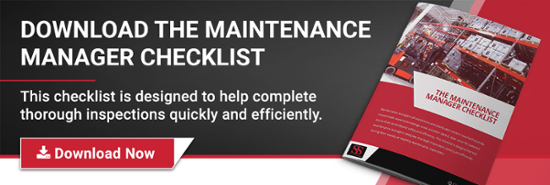Hurricane season is still in full swing, and the Carolinas have already suffered the brunt of a major storm. Even though we’re nearing the end of the hurricane season, it’s still important to make sure that your warehouse is prepared for the rigors of a major hurricane—including your warehouse’s loading dock doors.
Even if your warehouse avoids a major hurricane this year, next year’s hurricane season will be here before you know it (specifically, June 1). So, it’s important to make sure that your warehouse doors are sufficiently hurricane-proof now rather than later.
But, how can you be sure your warehouse dock doors are hurricane-proof, what can you do to improve their ability to stand up to a storm, and why should you focus on your industrial doors?
How Your Warehouse Dock Doors Impact Hurricane Preparedness
During a hurricane, your loading dock area (and the rest of your warehouse exterior) will be subjected to high winds and rain—possibly even flood water depending on your location and the intensity of the storm. This creates two major hazards:
- Doors and Walls Collapsing. Hurricane-force winds can blow in walls or tear doors from their frames—warehouse doors are especially vulnerable since they’re a structural weak point. Also, high winds can pick up and throw objects or knock over trees, light poles, and other tall objects.
- Water Flooding the Warehouse. If the seal around the warehouse door isn’t tight against water, the loading dock door could become an easy way for water to flow into the warehouse itself—especially during the extreme rainfall caused by a hurricane.
Having sturdy, well-maintained (and sealed) industrial doors in the loading dock can make the difference between keeping out wind, water, and pests or letting them in to damage your warehouse.
Inspecting Loading Dock Doors for Hurricane Readiness
One of the most important steps in making sure your warehouse’s dock doors are ready for hurricane season is to carefully inspect them before a hurricane hits. This isn’t too different from the inspection that you might do as part of your regular warehouse maintenance checklist, but the focus is on the condition of the loading dock door and its surrounding frame.
Some things to check include:
- Weather Seals. Are the seals watertight? How secure are they? Check for signs of wear and tear (warps, bends, discoloration, etc.). No weather seal is going to stop flood water, but it will keep out the majority of rain.
- Door Condition. Is the dock door dented or missing pieces? If glass is incorporated into the door, is it undamaged? If the door is damaged, it may need reinforcement or replacement.
- Dock Shelter/Seal. Many loading docks have external shelters and seals to help keep out the elements when a trailer is connected to the dock door. These shelters and seals, while designed for inclement weather, may become damaged if exposed to a major hurricane. Temporarily removing shelters can help keep them from being damaged if they’re not rated for hurricane-force winds.
- Dock Door Elevation. Is the dock door elevated from the ground, at ground level, or recessed into a loading dock platform? If at ground level or recessed into a platform, is the surrounding ground angled towards or away from the dock door? It may be prudent to add sandbag barriers to ground-level warehouse doors to help minimize the risk of water intrusion.
- Dock Door Frame. What is the condition of the doorway surrounding the dock door? Are there signs of cracks, chips, or other danger signs that the doorway itself is damaged? Damage to the structure surrounding the door could be dangerous even if the door itself is in flawless condition.
Can You Hurricane-Proof Your Warehouse?
While you might not be able to perfectly protect against all natural disasters, there are a few things you can do to help minimize damage and risk to your warehouse in the event of a hurricane:
- Move Containers Off of the Ground. Flooding is a common occurrence in a hurricane, and even the best-sealed warehouses may become flooded with a few inches of water. Consider removing pallets and other containers from the ground level as well as emptying out the lowest row of your industrial shelving, if possible.
- Shut Down Unnecessary Electronics. Turn off power to any systems or equipment that won’t be in use during the hurricane. Consider deactivating power at the circuit breaker to help prevent shorts—though it is advisable to keep some security systems and cold storage units powered on.
- Secure Your Forklifts. If possible, consider moving forklifts into a second-story area. If not, deactivate them, remove their batteries, and cover them with waterproof tarps to help minimize the risk of damage. Batteries should be stored off of the ground when removed.
- Clear the Parking Lot. Is the area around the parking lot free of loose objects, such as signage, large debris/rocks, or racks that could conceivably be picked up by hurricane-force winds? Removing these hazards can go a long way towards preventing severe damage.
These are just a few of the things that warehouse maintenance managers can do to prepare for a hurricane. For more about how to pick the right industrial doors to protect your warehouse during hurricane season, contact Southern States Dock and Door.






